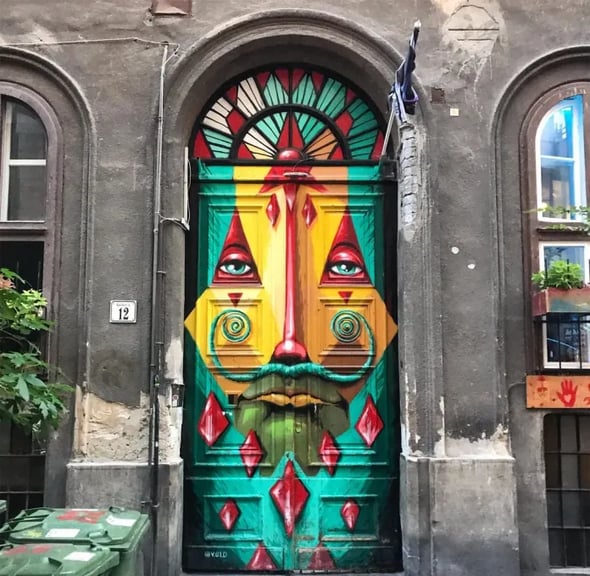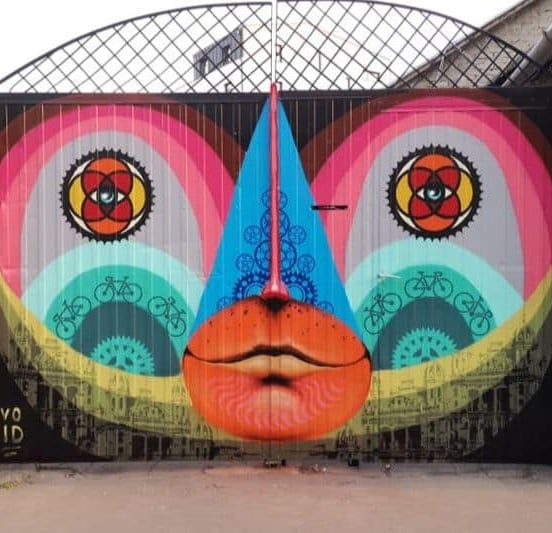
HUNGARIAN KNOWLEDGE
SATISFY YOUR THIRST FOR
THE HUNGARIAN LANGUAGE: GATEWAY TO YOUR FUTURE
Hungarian, known as "Magyar" in its native form, is a language that stands out as a fascinating anomaly in Europe. It belongs to the Uralic language family, a rare classification that sets it apart from the Indo-European languages dominating the continent.
Hungarian is primarily spoken in Hungary, where it is the official language, but it also has speakers in neighboring countries such as Romania, Slovakia, Serbia, and Ukraine, as well as in diaspora communities worldwide. With approximately 13 million speakers, Hungarian is the largest and most widely spoken Uralic language.
Unlike its Indo-European neighbors, Hungarian shares linguistic roots with Finnish and Estonian. However, these languages are not mutually intelligible due to significant divergences over thousands of years. Hungarian’s distinctive features can be found in its vocabulary, grammar and phonetics, which have evolved independently while incorporating influences from Turkish, German, Slavic, and Latin over centuries.
Hungarian is deeply tied to the culture and history of Hungary, helping to preserve the nation's identity during the many invasions it has suffered during its history. Of particular note is its rich literature, made up of poetic and philosophical works, with renowned writers such as Sándor Petőfi and Imre Kertész, the latter of whom won the Nobel Prize in Literature.
Here are 5 Unique Features of the Hungarian Language:
Agglutinative Grammar: meaning it forms words and expresses grammatical relationships through the addition of prefixes and suffixes. For instance, a single Hungarian word can encapsulate what would require an entire sentence in English. For example the word “házunkban,” means “in our house.”
Vowel Harmony: Hungarian employs vowel harmony, a phonological system where the vowels within a word must belong to one of two groups: front vowels or back vowels. This feature governs the selection of suffixes, ensuring a harmonious sound to the language.
Rich Case System: With 18 grammatical cases, Hungarian is a language of great precision. Cases define the roles of nouns in sentences, such as possession, direction, or location, replacing prepositions commonly used in English.
Flexible Word Order: While Hungarian has a subject-verb-object (SVO) structure, its word order is highly flexible, often determined by emphasis rather than strict grammatical rules. This flexibility allows speakers to highlight specific elements of a sentence dynamically.
Pronunciation: Hungarian pronunciation is consistent, with words pronounced as they are spelled. Stress is always placed on the first syllable, and the language has unique letters, such as ő and ű, which represent long vowels.

NATURAL METHOD TO LEARN HUNGARIAN
Our language courses are based on the Natural Method, also known as the Natural Approach, developed by linguist Stephen Krashen and language educator Tracy Terrell. This approach focuses on creating an environment that mimics how individuals naturally acquire their first language, emphasizing comprehension, communication, and a stress-free learning experience.
While other language courses rely on rote memorization and drills, a heavy academic approach to grammar, repetitive exercises, expensive and time-consuming formal tutoring sessions or ineffective and shallow phone apps, we will have you gradually build your language skills like a child learning his/her mother tongue.
There are essentially 5 Core Principles in the Natural Method:
Comprehensible Input (i+1)
Learners acquire a language when they are exposed to materials slightly beyond their current level of understanding (represented as i+1). By hearing or reading content they mostly understand, learners can gradually internalize new vocabulary and grammar structures.Focus on Communication
The Natural Method prioritizes fluency and the ability to communicate over grammatical perfection. Errors are seen as a natural part of the learning process and are not heavily penalised, reducing anxiety and encouraging learners to express themselves.Emotional Element
Emotional factors like anxiety, motivation and enjoyment greatly influence language acquisition. When learners are in a relaxed state, achieved by removing the anxiety linked to the pressure to produce perfect grammar, it is easier for them to get through the initial phase which is arguably the hardest and where most give up. It is also proven to be easier for the brain to absorb and retain new information if the learner is actually interested in the language and its underlying culture, which is why he have included extensive cultural insights, historical and modern pop culture elements in our language course.Stages of Language Acquisition
Scholars have identified the following stages in the language acquisition process of young children:Pre-production: The "silent period," where learners focus on listening and understanding without speaking.
Early Production: Learners begin using simple words and phrases.
Speech Emergence: Learners can construct longer sentences and express ideas more freely.
Intermediate Fluency: Learners develop more complex language skills and can engage in meaningful conversations.
Advanced Fluency: Learners achieve near-native proficiency.
The goal of our courses is thus to mimic the natural language acquisition process without overwhelming the learner with long and tedious lessons but ensuring gradual gains so that he/she remains committed to his/her fluency goal.
Meaningful Interaction
Instead of rote memorization of single words and grammar rules over and over, the Natural Method encourages activities that involve real-world communication to help retain information. This is why we have included storytelling and role-playing scenarios that simulate everyday situations, with exercises that allow the learner to understand his/her current level and thus improve upon specific elements.




EXPAND YOUR KNOWLEDGE
If you are interested in learning more about Hungarian culture and history as well as the language, we recommend that you download our complete Hungarian language course!
You will not only receive all the contents available on our website in convenient pdf or epub formats but also additional contents, including bonus vocabulary, more grammar structures and exclusive cultural insights with additional Hungarian vocabulary that you won't find anywhere else.
The additional articles include specific words or expressions related to the culture of the Hungarian people. Not only will you be able to speak the Hungarian language with confidence but you will amaze your listeners thanks to your knowledge of their country and history.
FREQUENTLY ASKED QUESTIONS
The top 5 reasons to learn the Hungarian language are:
It's Fun! Join a Unique Club
Hungarian is a fascinating and unique language that challenges learners with its distinct sounds, complex grammar, and rich vocabulary. Unlike Indo-European languages, it offers a fresh way of thinking about language structures, making the learning process both exciting and rewarding. Hungarian is spoken by only 13 million people worldwide, making it one of Europe's more distinctive languages. Learning Hungarian is like joining an exclusive group—few non-Hungarians take on the challenge, which makes it a truly special skill.Gain a Deeper Understanding of European History and Culture
Learning Hungarian provides insight into a rich and complex history that is often overlooked in mainstream narratives. Hungary has been shaped by influences from Central Europe, the Ottoman Empire, the Habsburg Monarchy, and beyond. From the Magyar conquest to the Austro-Hungarian Empire and the country's role in 20th-century history, Hungary has maintained a strong cultural and linguistic identity.Hungarians Appreciate When You Speak Their Language
Hungarians take great pride in their language, which has been central to their national identity for centuries. If you make the effort to speak even a few words, locals will greatly appreciate it. Hungarians are known for their hospitality, and a simple "Szia!" (Hello!) or "Köszönöm!" (Thank you!) can make a big difference in how you connect with people.Business Opportunities in a Growing Economy
Hungary boasts a dynamic and steadily growing economy with expanding opportunities in sectors such as manufacturing, information technology, renewable energy, and logistics. The country offers a strategic location in Central Europe, competitive labor costs, and a supportive environment for foreign investment. With pro-business policies and access to the EU market, Hungary is an attractive destination for entrepreneurs and investors alike. Learning Hungarian can give you a distinct edge when building local partnerships, navigating the business landscape, and establishing a strong presence in the region.
Visit Hungary for an Affordable and Unforgettable Experience
Hungary is an incredible travel destination, offering breathtaking landscapes, historic towns, and world-famous thermal baths—all at a relatively affordable cost compared to Western Europe. The capital, Budapest, is a stunning city with a mix of grand architecture, lively ruin bars, and relaxing spa culture. Beyond Budapest, you can explore picturesque wine regions, the scenic Danube Bend, charming countryside villages, and the vast plains of the Great Hungarian Plain.


Why learn Hungarian?
How difficult is Hungarian?
The Foreign Service Institute (FSI) of the United States Department of State classifies Hungarian as a Category III language, meaning it is more challenging for native English speakers to learn than most European languages but not as difficult as some East Asian or Arabic languages.
Several factors contribute to the difficulty of learning Hungarian for English speakers:
Unfamiliar Vocabulary – Unlike French, German, or Spanish, Hungarian does not share many cognates (similar words) with English. As a Finno-Ugric language, Hungarian’s vocabulary is distinct from Indo-European languages. For example:
Barát (friend) – no resemblance to "friend" in English
Szombat (Saturday) – looks completely different from other European equivalents
Ma (today) – again, no direct link to familiar words
Complex Grammar with 18 Cases – Instead of using prepositions (in, at, from, to) like English, Hungarian expresses relationships through suffixes, requiring learners to modify nouns based on their role in the sentence.
Vowel Harmony and Agglutination – Hungarian has a system of vowel harmony, meaning suffixes change based on the vowels in the root word. Additionally, it is an agglutinative language, meaning words are built by adding multiple suffixes, often creating long and complex structures.
Flexible Word Order – Unlike English, Hungarian allows words to be rearranged based on emphasis, which makes sentence structure less predictable for beginners.
Our Hungarian language course is designed to maximize your learning efficiency, helping you achieve conversational fluency in just 30 days. Instead of overwhelming you with complex grammar rules all at once, our method builds your language skills gradually, ensuring that you can speak, understand, and engage in real-life conversations from day one.


Why can't I improve in Hungarian?
One of the biggest obstacles to learning Hungarian isn’t necessarily the grammar—it’s the lack of comprehensive learning resources that effectively bridge the gap between beginner materials and advanced contents. Many learners find themselves stuck after reaching a beginner level because there aren’t enough books, courses, or accessible content. Unlike languages such as Japanese or Korean, where global pop culture (like anime or K-dramas) has created a huge international demand, Hungarian media and culture have not spread worldwide in the same way. As a result, fewer people attempt to learn Hungarian, leading to a smaller selection of textbooks, online courses, and language learning tools.
This lack of resources is further complicated by the fact that Hungarian is not widely spoken outside Hungary, and the Hungarian-speaking diaspora, while significant, is still relatively small compared to major world languages. While languages like Spanish or French have millions of speakers across multiple continents, Hungarian is primarily concentrated in Hungary, with smaller communities in Romania, Slovakia, Serbia, and a few other countries. This geographical limitation makes it harder for learners to find immersion opportunities, practice partners, and real-world language exposure.
We recognize that the lack of quality Hungarian learning resources is a major challenge, and our goal is to bridge the gap by creating content that helps learners progress beyond the beginner level.
If you have any suggestions for future lessons or articles, feel free to send them to info@learnhungarian.org—we’d love to hear from you and tailor our content to fit your learning needs!


Is Hungarian similar to other languages?
Hungarian belongs to the Uralic language family, which also includes Finnish, Estonian, and several lesser-known languages spoken across northern Eurasia, such as Sami, Udmurt, Komi, and Mari. Unlike its Indo-European neighbors, such as Slovak, Romanian, and Croatian, Hungarian has a completely different linguistic ancestry. This makes it one of the few non-Indo-European languages in Europe, along with Finnish and Estonian.
Although Hungarian retains its Uralic roots, centuries of contact with Indo-European languages have introduced a significant number of loanwords into its vocabulary. Hungarian has borrowed from:
Germanic languages (German, English) – Due to historical trade and Austro-Hungarian rule, many German words have been adopted, especially in administration, commerce, and everyday life.
Bank (bank) – from German Bank
Színház (theater) – from German Schauspielhaus
Slavic languages (Slovak, Serbian, Croatian, Polish) – Hungarian has absorbed many Slavic loanwords, especially in everyday speech.
Robot (work, labor) – from Czech robota
Kovács (smith) – from Slavic kovač
Turkic languages – Due to historical contact with Turkic peoples, including the early Magyars' migration and later Ottoman influence, Hungarian has several Turkic-origin words.
Szablya (saber) – from a Turkic language
Kapu (gate) – from Turkic kapı
Latin and French – Many scientific, legal, and academic terms come from these languages, as in most European languages.
Kórház (hospital) – from Latin hospitale
Montázs (montage) – from French montage


How to become fluent in Hungarian?
These are 5 proven methods that we have developed as language learners (not only as teachers!) that will help you achieve complete mastery of any language:
1. Immerse Yourself Completely
Surround Yourself: Change the language of your phone, computer, tv, console, news sources, radio stations, song playlists and streaming apps to the language you want to learn.
Engaging Content: Listen to native music, watch original movies, learn about the culture and history of the country on Youtube. This will help you stay motivated and reduce the initial frustration.
Make Mistakes: Travel to the country where the language is spoken and don't be afraid to engage with the locals. People will be amazed at your efforts to learn their language.
2. Focus on the Most Useful Words and Phrases
Study Efficiency: Learn the top 2,000 words in the language, as they often cover 80-90% of everyday conversations. Learning takes time but that doesn't mean it has to take very long to see results.
Real Conversations: Start by practising with common phrases you'll actually use in real-life situations, like greetings, ordering food, asking for directions, etc.
3. Use Memorization Techniques
Spaced Repetition: Our Courses are based on spaced spaced repetition systems (SRS) to help you memorize words and grammar in the long term and with miminal effort by showing them to you in progression.
Mnemonic Devices: trick your brain and speed up the learning process by trying to think of an example or "story" for each new word / expression you struggle to remember.
4. Learn the Language based on the Context
Practice Makes Perfect: Remember that your grammar doesn't have to be perfect as long as you can be understood! There is no shame in using simple phrases to get you point across.
Shadowing Technique: Repeat in your head after native speakers in real-time while listening or watching videos with original subtitles to improve your comprehension.
5. Consistency is Everything
Daily Practice: Even just 30 minutes a day is more effective than sporadic, long day study sessions. Take breaks often when reading and always have fun to increase productivity.
Compound Results: Small, achievable goals like reading 5 pages daily, or even just watching a movie or playing a videogame every evening produce results over time if you don't see them immediately.




EXPAND YOUR KNOWLEDGE
If you are interested in learning more about Hungarian culture and history as well as the language, we recommend that you download our complete Hungarian language course!
You will not only receive all the contents available on our website in convenient pdf or epub formats but also additional contents, including bonus vocabulary, more grammar structures and exclusive cultural insights with additional Hungarian vocabulary that you won't find anywhere else.
The additional articles include specific words or expressions related to the culture of the Hungarian people. Not only will you be able to speak the Hungarian language with confidence but you will amaze your listeners thanks to your knowledge of their country and history.
OTHER LANGUAGE COURSES
Have you already mastered Hungarian?
Congratulations on your achievement! We'd love to hear your feedback to help us improve our lessons and continue providing fresh, engaging content. Feel free to share your thoughts at info@learnhungarian.net.
Ready for your next language challenge?
Explore the languages below and dive into free, high-quality language learning resources we recommend. Each language offers unique opportunities to broaden your linguistic and cultural horizons:
Learn German: One of the most widely spoken languages in Europe, perfect for exploring its rich literary and philosophical tradition.
Learn Japanese: A fascinating language combining modern innovation with ancient traditions, essential for exploring Japan's unique culture and global influence.
Learn Korean: A dynamic language with a scientifically designed writing system, offering deep insights into Korea's rich history and vibrant modern culture.
Learn Tigrinya: A Semitic language spoken in Eritrea and northern Ethiopia, unlocking access to a rich cultural heritage and history.
Learn Spanish: One of the most widely spoken languages globally, opening doors to vibrant cultures across Europe, Latin America, and beyond.
Learn Portuguese: A melodic and expressive language, connecting you to Portugal, Brazil, and the diverse cultures of the Lusophone world.
Learn French: The language of love and diplomacy, unlocking access to vibrant cultures worldwide.
Learn Chinese: The most spoken language globally, with a fascinating history and culture.
Learn Arabic: A key to understanding the Middle East, essential for exploring Islamic culture and literature.
Learn Russian: An influential language spoken across Eastern Europe and Central Asia.
Learn Italian: The romantic and melodic language of Italy, deeply tied to its artistry and heritage.
Learn Ukrainian: A beautiful and expressive language that serves as a gateway to Eastern European culture.
Learn Georgian: An ancient language with its unique script, unraveling the mysteries of Georgian traditions.
Learn Estonian: A Nordic-Baltic language with a melodic tone, connecting you to Estonia’s culture.
Learn Uzbek: A Turkic language that offers insight into Central Asian culture and history.
Learn Swahili: East Africa's lingua franca, offering access to its rich heritage and traditions.
Learn Modern Hebrew: A revived ancient language deeply tied to Israel’s history, religion, and modern life.
Learn Albanian: The language of the Balkans, offering a unique window into its cultural heritage.
Learn Finnish: A challenging yet rewarding Nordic language with strong ties to Finland’s identity.
Learn Polish: A Slavic language key to understanding Poland’s rich history and culture.
Learn Romanian: A romance language deeply rooted in Latin, known for its poetic and historical nature.
Learn Persian (Farsi): The elegant language of Iran, steeped in poetic and philosophical traditions.
Learn Armenian: The ancient language of Armenia, featuring a unique alphabet and deep cultural roots.
Learn Kazakh: A Turkic language reflecting the rich heritage and nomadic traditions of Kazakhstan.
Learn Slovak: A Central European language closely related to Czech, ideal for exploring Slovakia’s history.
Learn Afrikaans: A simplified offshoot of Dutch, widely spoken in South Africa’s diverse communities.
Learn Danish: A language of Denmark, connecting you to Scandinavian culture and design.
Learn Serbian: A Slavic language essential for diving into the cultural richness of the Balkans.
Learn Lithuanian: One of Europe’s oldest languages, deeply rooted in the Baltic region’s history.
Learn Wolof: A widely spoken language of Senegal, tied to its vibrant oral traditions.
Learn Slovene: A unique language of Slovenia, reflecting its Alpine heritage and cultural charm.
Learn Inuit: The language of Arctic indigenous communities, preserving their unique wisdom and traditions.
Learn Hungarian: A unique Finno-Ugric language, renowned for its literary traditions, music, and thermal baths.
Learn Turkish: A vibrant and historic Turkic language, offering insights into the Ottoman Empire’s legacy and modern Turkey’s rich culture.
Learn Mongolian: The ancient language of the steppes, connecting you to Mongolia’s nomadic heritage and the legacy of the Great Khans.
Learn Latvian: A rare Baltic language with Indo-European roots, connecting you to Latvia’s vibrant folk songs, intricate weaving traditions, and storied history by the Baltic Sea.
Learn Bulgarian: A Slavic language with deep historical roots, closely related to Macedonian and known for its unique grammatical structure.
Learn Czech: A West Slavic language with a rich literary tradition, closely related to Slovak and spoken in the heart of Central Europe.
Learn Dutch: A Germanic language spoken in the Netherlands and Belgium, known for its influence on global trade and culture.
Learn Greek: The language of ancient philosophy and modern European heritage, with a unique alphabet and deep historical significance.
Learn Hindi: One of the most spoken languages in the world, essential for exploring India’s diverse culture, history, and Bollywood cinema.
Learn Modern Hebrew (Ivrit): A revived ancient language deeply tied to Israel’s history, religion, and modern life.
Learn Norwegian: A Scandinavian language with two written forms, closely related to Swedish and Danish, ideal for exploring Norway’s culture and landscapes.
Learn Swedish: A melodic Scandinavian language, connecting you to Sweden’s literature, music, and design heritage.
Learn Malay: A major language of Southeast Asia, spoken in Malaysia, Indonesia, and beyond, offering insight into a rich blend of Malay, Islamic, and colonial influences.
Learn Thai: A tonal language with a unique script, deeply tied to Thailand’s rich cultural heritage, from its royal traditions to its vibrant street markets and Buddhist temples.
Choose your next language and start a new adventure!



